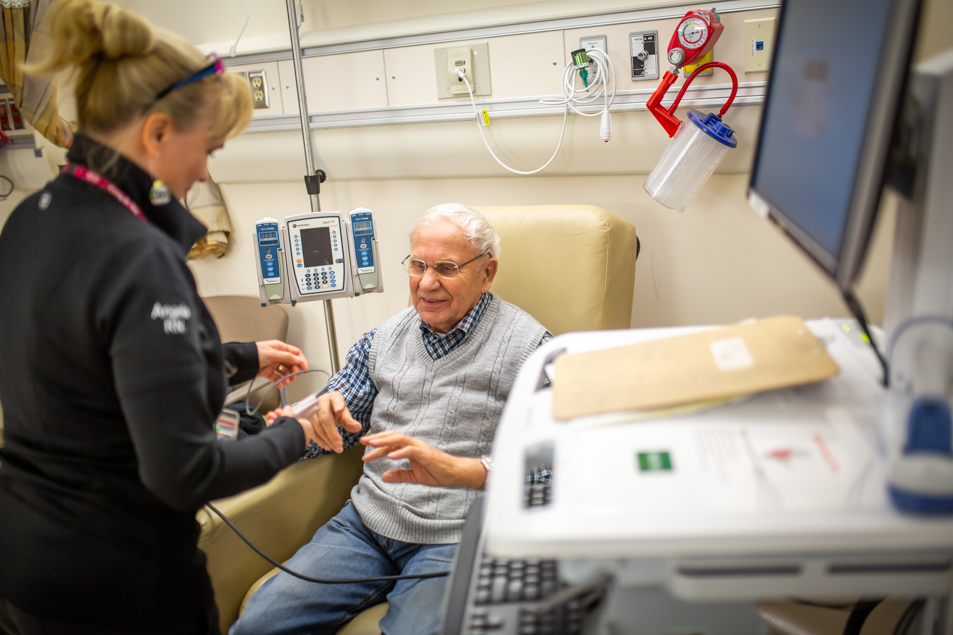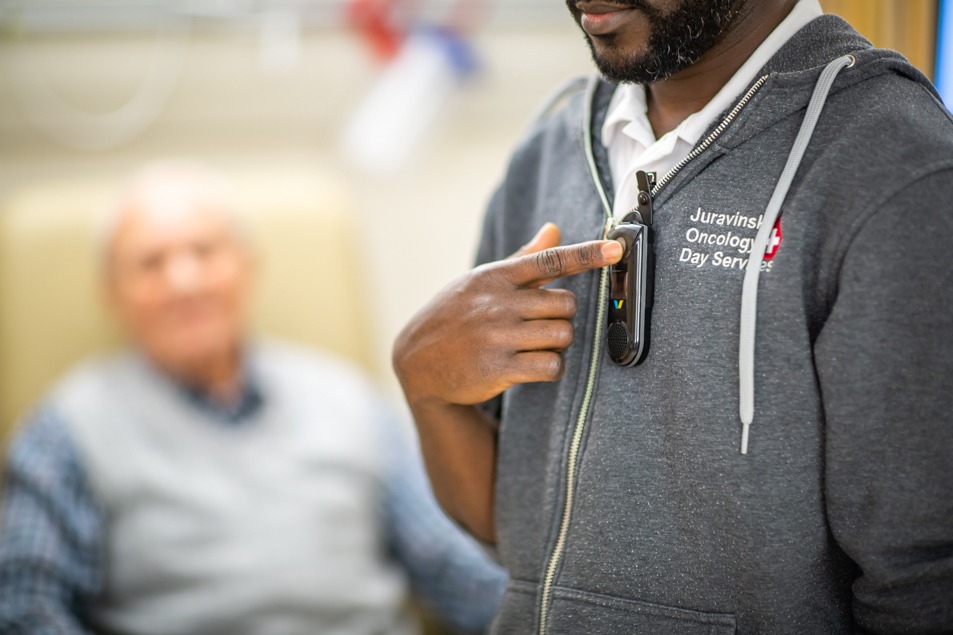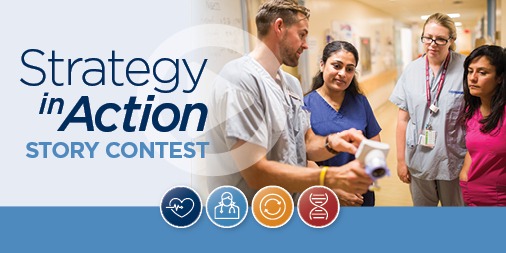
Making room for more patients in Oncology Day Services
Oncology Day Services (ODS) is a bustling unit at Juravinski Hospital and Cancer Centre. They care for cancer patients who aren’t currently hospitalized, but need ongoing support such as chemotherapy, blood transfusions, and IV therapies. In recent years, they have begun to see even more patients, and offer even more procedures. To meet increased demand, they are using creative strategies to build capacity and accommodate more same-day appointments.
“We have a really engaged group of staff, and they were eager to get involved,” says Susan Duong, clinical leader of ODS. “Staff shared ideas for how we could improve our workflow to see patients in a timelier manner.”
Finding creative ways to reduce backlog
ODS uses Hamilton Health Sciences’ Continuous Quality Improvement (CQI) system to address issues and identify opportunities for improvement. The system encourages bottom up solutions by giving frontline staff the tools they need to make change. Using the CQI tools, ODS staff set out to improve the number of patients they can accommodate in same-day appointments.
“Many of the patients we care for are quite sick,” says Karen Robinson, clinical manager of ODS. “By making room for additional same-day appointments, we avoid backlog in the emergency department. We’re also able to reduce the need for overnight hospital admissions.”
When a patient is able to get a same-day appointment in ODS, they can go straight to the unit for their care, rather than waiting to be admitted through the emergency department (ED). This reduces overcrowding in the ED. Additionally, it creates a more pleasant experience for the patient.
“We wanted to find solutions that would last”
At the outset of their project, ODS set a goal of adding five additional same-day appointments to their schedule each day. In order to achieve this goal, they assessed their current processes to find room for improvement.
“We thought about the problem strategically,” says Susan. “We wanted to find solutions that would last, so we tackled the problem one step at a time.”
Saving time and finding space
The team zeroed in on two main ways to add capacity: finding new and creative uses for space, and implementing time-saving technology.
To create new clinical space, the team converted underused office space into exam rooms. They also created a new protocol where patients return to the waiting room while they await blood work results. This frees up valuable space for other patients to be treated.

They harnessed the power of technology to work more efficiently by purchasing five new portable workstations, along with a set of hands-free communication devices that function like sophisticated walkie talkies. Thanks to the new technology, less time is spent sourcing and inputting information.
Feedback helps improvements stick
The team has been tracking their progress by integrating additional feedback from staff to refine the changes they’ve made. This feedback loop is a core part of solving problems in the CQI system, and helps ensure improvements stick. So far, both staff and patients have responded positively to the changes.
“We’ve had really good uptake,” says Susan. “People are using the technology and the new protocols. This is allowing us to treat people faster, and make time and space for more appointments.”
The project is still young, and the team sees lots of opportunity for further improvement. They’re proud of how far they’ve come in the past year. Most of all, they’re glad to know they are improving patients’ lives every day.

This story was selected as a winner in our Strategy in Action contest, which asks teams across Hamilton Health Sciences to share how they are putting our strategy into practice.
This initiative supports Operational Excellence, one of four strategic directions identified in Hamilton Health Sciences’ Strategic Plan. Operational Excellence is about aligning strategy, systems, tools, and culture to continuously improve value for patients and families.
